Diving back into Sake: A Renaissance
Nearly 10 years have passed since I wrote this post titled “A little introduction to Sake: the Japanese wine!” (1), inspired, back then, by the visit of Mr Naoki Suzuki, owner of Suzuki Shuzouten Brewery (Hideyoshi Brand), at the niche boutique wine & spirits store, called Heights Chateau”, in Brooklyn Heights, where I used to work during my New York years.
And to my surprise, despite a noticeable increase in sales and consumption in Eastern Asia, as well as the UK and the US, over the last decade, it seems that the rest of the world, more especially the old Europe, has been late to surf the Sake wave that came along with the flourishing interest for traditional Japanese culture and culinary savoir-faire experienced by most capitals of the world in the 2010s.
The Sake Wave
Like a rippling effect expanding from Tokyo, the Sake wave first started, (roughly around the New Millennium), in the Eastern Asian countries, like China (including Taiwan, Hong Kong and Macao) and Korea.
Right next door to Japan, and having benefitted of the proximity and the cultural mix of people, traditions, customs, and food and drinks, for centuries, the older generations (of these countries) had plenty of time to get acquainted with Sake, and drinking it was already part of some of their traditions.
However, since right after its peak in the mid-70s to the moment prior to the arrival of the wave at the beginning of 2000s, drinking Sake had been deemed “old school” and “out of fashion” for years. Like an old grandpa's drink (especially the low-quality Sake with added alcohol). Yet, the expression of a renewed interest for Sake came with the younger generations, with whom Sake regained certain popularity (especially the top end Sake: Ginjō and Daiginjō (super-premium ginjō)).
In the early to mid-2000s, the Sake wave eventually reached the UK, more specifically London. Due to the close political, financial and economic relationship with Japan in recent years, and as the UK has been the “booze-provider” for the rest of the world, for centuries, (as well as being the “Avant-Garde” model of Europe in terms of Fashion, Design and Fusion food, for the past 25 years), it came to no surprise that the UK would develop a strong interest for Sake and rapidly become the Sake world market leader outside Japan.
The Sake wave continued its journey to the west, to reach the US, fairly shortly after the UK, during the second half of the 2000s, and quickly took over America, more especially the Eastern Coast, which experienced a very enthusiastic interest toward Sake, led by New York’s finest Sommeliers, Wine geeks, Mixologists and other so-called influencers and nerdy fashion victims looking for something new to dedicate their attention to. Fortunately, it has been a lasting trend ever since.
The ripples from Japan never stopped and even steadily increased, since the early 2000s, yet exports still only represent fewer than 10% of all the Sake produced in Japan.
The Sake and the French
In the last 5 years, the ever-growing Sake wave seemed to have found its way back to old Europe. Starting with France, who eventually woke up from its “usual” lethargic, distant and apathetic self-absorption and fabled disdain for the “Not-Made-in-France”, to give Sake a quick glance with contempt at first (typically French…), then staring at it in amazement having realized its importance and potential in the current market.
Don’t blame the French, their history with what was supposedly seen as (and/or taken for) “Sake”, (but was not), started with the immigrants of Southeast Asia (predominantly Vietnamese, Laotians and Cambodians, as well as some Thais and Chinese) who, at the end of the Vietnam War in 1975, emigrated to France (to escape the communist takeover of their countries and persecution by the new governments). They brought with them the strong and cheap rice-alcohol, similar to the Chinese liquor Baijiu (白酒) or Shaojiu (烧酒/燒酒), which has nothing to do with but was assimilated to Sake, mainly due to lack of knowledge and culture of the product.
Yes, the same nauseating, colourless and strong liquid you drink in a porcelain/ceramic cup with a picture of a naked Asian girl at the bottom (inside) when you go to some “so-called” local “Chinese” restaurant in France, where the food is usually eatable, but far from being memorable, sometimes even unpalatable, and the roots of the cuisine are actually more Vietnamese and Thais rather than being actually “Chinese” (per se).
So, here we are, Sake has finally succeeded to make an impression on the French. Yet, despite a few players from the Wine & Spirits retail scene and the Restaurants/Bars/Hotels scene, paying close attention to it, the French interest (for Sake) seems to have remained quite shy and the development of a certain taste for Sake progresses rather timidly in France (so far).
In my opinion, two reasons come to mind: the fact that France is a producing country worldly famous for its exquisite and refined local food, wines and spirits (“So, why bring a Japanese wine/spirit to the table when we already have the best of the best?”... very French, isn’t it? ), and also, the fact that, to this day, the French still remain fairly unacquainted with and unknowledgeable about the product (Sake that is).
And, that is the real question: Are the French unacquainted with and unknowledgeable about Sake because of lack of interest? or lack of source of information and education on the subject?
A bit of both I believe.
And I can already hear you say that if it is not due to lack of interest, and there is a true desire to learn about it, then with the internet, now, anyone can have access to all the info they need and learn rapidly about everything they want and/or anything else, anywhere. So, this is not an excuse.
Well... I will say, you’re right... But, you see, the French are notoriously opinionated on everything and love to talk and discuss any subject over lengthy conversions, while having a coffee or a drink somewhere crowded (usually the trendiest the better). And, you’ve got to love the French for that, as they love a certain lifestyle the rest of the world is jealous of it (and you know it is true, no matter what you may think).
Consequently, the French would rather go to a proper class or a physical meeting or tasting, to meet people, taste and learn about the product, and loudly voice their opinions, while sipping a drink, rather than getting bored watching inattentively webinars, webcasts, and other web meetings. In recent years, Sake classes and certifications have been mushrooming in most capitals of the western world, but it is still a niche that is not yet accessible to all or widely available.
Yet, in these extremely difficult times of COVID-19 Pandemic, social-distancing and re-confinement, gatherings have become a rare or limited thing, and the internet bubble has never been more active and explosive than within these last 11 months. Web browsing and ordering goods online have become the new norm, mainly due to the re-confinement and certain incoherent restrictions in France (and other countries) (e.g. the closing of the non-essential businesses, including bars/bistros/restaurants/clubs, and pretty much all the other businesses related to tourism, which is killing the SME (Small and medium enterprises) that depend on them directly and indirectly, including the French food and wine and spirits industry, basically killing the overall French economy).
In France, with the new laws and other restrictions due to the COVID, it has become a nightmare to come out of home, even to simply go out to do grocery shopping. In short, you can’t step outside your home without the despicable “Attestation sur l’Honneur” (the sworn statement form), no matter what you do or where you go, and you need to have one justifying every single one of your actions outside your home. Even if it is just to put the rubbish bin a few meters outside the perimeter of your house for the garbage collector.
Consequently, confined and restricted, more people are ordering online, and, (don’t get me wrong), not to capitalize on the misery of the world and/or the fact that booze sales and consumption have exploded all over the world along with the arrival of the virus and all of its consequences, but, (and it might resemble “capitalizing on it”), there is still room for newcomers on the internet and more specifically in the world of “APPS” on smartphones, Ipads and other tablets and electronic devices, to develop new Apps to help people getting more informed and acquainted with their preferred “social-distancing-at-home” drinks and boozes... and that includes Sake too.
Why an App about Sake?
First, because, Sake is still a niche product in France (and elsewhere), which is not well-known and not well-referenced, so far, (except on a myriad of websites over the internet of course), so an App reconciling all the info in a clear and easy to understand way, with a customer-oriented friendly interface, might make it easier.
Secondly, because Sake is getting more and more coverage from the press and interest from the younger generations, and, thus, deserves more attention and credits, as, like wine and beers, it offers a wide and diverse range of tastes and styles to be paired with food from different horizons, and it is versatile enough to simply drink on any occasions.
Thirdly, because, (and there again not to take advantage of people’s misery), but, as alcohol consumption increases, people are going to be more willing to try new things to drink and sip on while having hours to spare working from home and watching Netflix and Apple TV and playing Video Games and cooking at home due to the social distancing restrictions and the re-confinement.
The Zoom Meeting
And, on that note about creating new technology to inform and help people on selecting and eventually ordering and having their booze delivered via an App, I was referred (by a friend) to “Zoom meet” with a group of young people, (currently still students in an Engineering School, some of them even following MBA programs), to answer their questions regarding a new App they are working on, focusing on Sake. (I can’t reveal much of their project as it is still under development, yet should be available fairly soon, it’s exciting).
Although I’m far from being an expert, I have been buying, promoting and selling Sake for the last 13 years, including 9 years when I was working in niche boutique wine & spirits retail stores in New York, also buying some for my own consumption since the mid-2000s. And I still continue to drink some regularly till this day, which makes me more like some sort of a Sake aficionado.
And consequently, I gladly accepted their offer to “Zoom meet” to discuss the subject and give my opinion on their project, as a Sake connoisseur and a potential customer for their App too, (once it will be released). Also, because I love Sake and I love talking about it too. And, for that matter, the Zoom meeting was last night. A very interesting and enlightening experience, I must say, talking with 3 motivated and determined young adults (normally 5 in the team, but 2 could not attend), eager to finalize and launch their Application to the world.
What prompted me to write this post...
To prepare for the Zoom meeting, they told me that we will discuss/converse about Sake (in general), the product itself, its origins and its evolution in the current market, and, more specifically, its recent arrival in Occident (the “Sake wave” movement I mentioned above and started this post with).
Not really knowing the nature nor the extent of the questions they will ask me, I decided to revisit the old post I wrote on Sake, (A little introduction to Sake: The Japanese Wine!)(1), for me to dive back into the subject, then furthermore explore the internet to refresh and update my knowledge on that particular topic.
Which, unavoidably (knowing me and my thirst for knowledge and passion for writing), prompted me to write this new post about Sake, to re-introduce the product for those of you who are still unfamiliar with it, including some useful technical details, and elaborating a little further on the ongoing “Renaissance” Sake is experiencing in Japan and the rest of the world.
 |
| Diving back into Sake: A Renaissance by ©LeDomduVin 2020 |
So, First and Foremost, What is Sake?
Basically, Sake, also spelt “Saké”, or “Seishu” (清酒) in Japanese (another name for Sake), is traditional Japanese alcohol made (or “brewed” should I say) from fermented rice.
Sake is an alcoholic beverage usually containing between 13-17% alcohol, roughly made out of 80% water and 20% rice. It is a natural product (“organic” if you prefer) resulting from the combination of polished rice + water + yeast (or more traditionally “Koji mold”).
The term "Sake", which also qualifies to any alcoholic drink in Japan, designates more particularly “rice alcohol” obtained by fermentation, more specifically called “Nihonshu”.
Although known as “Nihonshu” (literally “Japanese liquor”) in Japan, in the Western World (and the rest of the world for that matter), it is mostly referred to as “Sake”, and occasionally as “Japanese wine” or “Rice wine” or “Rice beer” or even “Rice alcohol”.
Due to the fact that it is made with grains and due to the process it goes through, Sake has more in common with beer, than wine, and, maybe, should be renamed as “Rice Beer”. Yet, its complexity, depth and texture to a certain extent, (and even the percentage of alcohol per volume), are closer to wine than beer, so “Rice wine” it is.
Also, like Wine and Beer, Sake comes in a countless amount of varieties and ranges, from light to strong, dry to sweet, clear to cloudy, transparent to slightly coloured. These variations of styles and tastes are mostly due to 3 main factors:
- How polished the rice grains used are? (usually the higher the percentage of polishing, the better and refined, but not always)
- The fermentation process
- The desired style to be achieved
And since quite recently, to appeal to younger crowds, Sake can even be found as sparkling and even flavoured (“aromatized” should I say), which add even more dimensions to the styles and tastes of Sake.
NB: The brewing process to make Sake and the resulting various types of Sake are described in the lastest paragraphs at the bottom of this post.
A Brief History of the Origins of Sake
The origins of sake are unclear but can be traced back roughly to 2500 years ago (or 500BC, if you prefer) at the earliest, and, not in Japan, but in China, where a similar type of alcohol made with fermented rice was already consumed.
Back then, to say the least, the process was crude. The villagers would gather to chew rice (and even nuts), spitting it into a communal tub, which would then be stored and left to ferment (the enzymes in their saliva aided the fermentation process). (2)
This rather questionable method was abandoned after the discovery of “koji” mold (Aspergillus oryzae), a filamentous fungus used in Japan to saccharify rice, sweet potato, and barley in the making of alcoholic beverages such as sake and shōchū, and also to ferment soybeans for making soy sauce and miso. (3)
The koji mold enzyme added to the rice allowed the fermentation to begin. This brewing technique is believed to have spread throughout Japan in the Nara period (710 to 794), resulting in sake as we know it today. (2)
Japanese Sake was developed a few hundred years later than China, after rice was first cultivated in Japan over 2000 years ago, with kuchikami-zake as one of the earliest forms of the drink on record.
Similar to the technique used in China, “Kuchikamizake” or “Kuchikami no sake” is a kind of rice-based alcohol produced by a process involving mold saliva as a fermentation starter. Kuchikamizake was one of the earliest types of Japanese alcoholic drinks. Kuchi means "mouth", kami means "ferment" and zake is the rendaku form of "sake". (5)
In Japan, it was named “Nihonshu” (literally "Japanese alcohol"), to differentiate it from other kinds of alcohol, imported from Europe and the US, in the 19th century, like beer and whiskey.
Nowadays, “Nihonshu” (or “Sake”), one of the oldest drinks in Japan, remains one of the most traditionally consumed spirits of the archipelago, enjoyed on all occasions, yet, more especially during festive meals (e.g. wedding, anniversaries, special events, special and national holidays, etc…).
Served for both rituals and gastronomy, and anywhere in between both ends of the culinary spectrum, Sake is a quintessential part of Japanese culture.
From the 8th Century to Present Days
Sake production was initially a government monopoly, until the 10th century when temples and shrines started brewing their own. The temples would become the primary distilleries of the drink for centuries, and by the 1300s, sake had become the most ceremonious beverage in Japan. (2)
During the Meiji Restoration (1868 to 1912), new laws permitted anyone with the resources and ability to brew sake to open their own brewery. Within a year, over 30,000 new breweries opened in Japan, but due to continuously increasing taxation on sake producers, over two-thirds were forced to shut down. Several of the family-owned and operated breweries that survived this period still exist today. (2)
In the 20th century, improvements in brewing technology and equipment led to huge increases in the quality and production of sake. Steel tanks soon replaced the traditional wooden barrels used to brew sake, which were considered unsanitary and less durable. Around this time, sake accounted for about 30% of the country’s entire tax revenue, leading the government to ban home-brewed alcohol because it couldn’t be taxed. It is still illegal to home-brew in Japan without a license. (2)
During World War II, rice shortages required brewers to add pure alcohol and glucose to in order to maintain or increase volume; to this day, 75% of sake is still made using this method. While Japan’s brewing industry began to recover after the war, the recent popularity of Western spirits – namely beer and wine – began to overtake sake in sales and consumption. (2)
Nowadays, although fewer than 2,000 sake breweries exist in Japan today, the drink has steadily grown in popularity overseas, with breweries opening in North and South America, China, Southeast Asia, and Australia. Sake Day, traditionally a Japanese holiday held every year on October 1st, is now celebrated by brewers and enthusiasts worldwide. (2)
Society changed, Sake image didn’t!
Sake as we know it today has been produced and consumed roughly from the 8th century onward, up to its peak in the early 70s. Afterwards, over the last 50 years, Sake suffered from having an old image unappealing to the young, who, under the influence of the rising western culture from the UK and the US via magazines, music on the radio, news on TV and movies at the cinema, better-appreciated beer and wine or even whiskey, rather than Sake, which remained out of fashion until fairly recently (about a decade ago or so).
Up the early 70s, an estimated 6-7500 breweries were still active, with only 25-30% of them being small family-owned and operated artisanal breweries, the rest being run by consortiums or owned by big companies producing cheap sake with added alcohol for the masses.
As a result of the young ‘s lack of interest and sales decreasing dramatically, the amount of breweries has been divided by 3 since 1973, and only fewer than 2000 breweries remain to this day. That’s roughly twice less than in the 80s. And local consumption now only represents a third of what it used to be compared to the early 70s, at the peak of the Sake consumption in Japan.
Till today, European and American alcohol, namely beer, wine and whiskey, continued to be prefered by the younger generations in Japan. Yet, Sake is nowadays experiencing a needed renaissance that was originally triggered by the young of other countries than Japan, namely Korea, China and more recently some European countries like France, but also the UK, which has played a strong role in the marketing and distribution of Sake, and the US where Bobos and Hipsters, Sommeliers, Cavistes and other influencers have contributed to the recent hype.
Stuck in the Last Century
Despite recent efforts in the last decade or so, to find solutions via the creation of groups and consortiums to improve the situation (production, promotion, distribution, etc...), the problem mainly came (and still nowadays comes) from the breweries being small, local, independent, often family-owned and operated, with limited knowledge and sight on the national and (even less) on the global market. Not to mention feedback on the exported Sake, as they were (still are) inexistent.
And consequently, Sake breweries having no clues nor aspiration on the potential of the export market outside Japan, (which is currently very low as the estimated total exported internationally only represents only about 5-8% of all the Sake produce in Japan), resulted in a very artisanal, fragmented industry, that barely has any evolution locally, and did not even take any advantage of the increasing infatuation toward Sake in a lot of countries outside Japan, over the last 10 years.
Despite some rare examples, the majority of these small breweries, also called “Kura” (or Sakagura) (4), are (usually) independent and not associated with each other, and do not necessarily want to form or be a part of groups or consortiums to prevent the situation, and therefore have no marketing nor exportation prospects. Clearly, no globalisation, no market knowledge, no feedback, small or limited production, small margins on cost, mean no real future for most Sake breweries.
With exportation only amounting to 5-8% at the moment, and Sake being mostly consumed in the local restaurants, by the locals, and eventually, some tourists inclined to traditions, Sake breweries are in a need for a true renaissance and full revamp of the market and distribution concepts.
Yet, as most breweries don’t even a website or a page on social media, nor a marketing plan to plan ahead for a better future, it seems that the Sake breweries are stuck in the last century type of mentality, instead of embracing the future by surfing on the technology and communication wave of the last 20 years.
Therefore, no wonder why Sake suffers not only from an old image, but also from a decrease of the local consumption, due to lack of interest from the young generations, breweries are not even trying, and new generations are not necessarily interested in taking over the family business.
The other issue the breweries are facing is decreasing Japanese demography (currently about 500,000 persons die per year in japan, with estimates to go up to about 1 million within the next 5-10 years). To which can be added very low natality at 1.4 ratios, instead of the necessary 2.1 ratios, to keep a steady growth of the demography and balanced the mortality rate. If ways are not found soon to revamp or even reinvent the image of the Sake and Japanese Breweries, they might both die in a not-so-distant future.
A Renaissance
Fortunately, the real scenario is not yet as catastrophic. Moreover, that was without counting on the rest of the world which is watching and won’t let that happen. For the simple and good reason, that the world has witnessed a dramatic increase in Japanese culinary culture and fusion cuisine, everywhere, in most of the western world capitals and largest cities, in the last 10 years.
And now, not only the younger generations in the western world have been embracing Japanese culture and healthy culinary traditions (Sushi, Teppanyaki, Tempura, Yakitori, Sashimi, Ramen, Donburi, etc…), but, they are looking at Sake as a new trendy (not to say geeky or even nerdy) beverage of choice. But hey, it is cool to be a nerdy or even brainy, nowadays as everything depends on knowledge and technology. (6)
Moreover, young Japanese people more influenced by occident, and even Occidental young people attracted by the Japanese culture, are making a “come back” to local and artisanal Japanese products, including Sake, to try to revamp and reinvent its image, for young people to discover or rediscover it again, via all sorts of events and places (restaurants, bistros, cafés, bars, clubs, lounges, etc…).
In Japan and Korea, even DJs are backing up Sake, by taking a step further in using Sake as the beverage of choice for their music festivals or during other events, where Sake is served on its own or mixed within a cocktail, but is also served with food like shellfish and cheese, and even starts to become as popular as beers. Trendy bars, restaurants and other places are revamping their drink list to include more Sake and/or have some Sake mixed with other alcohol or sodas.
Even the Kanji that the breweries have been using on their labels are undergoing a renaissance of their own, as the young Japanese, as well as the other people, involved into this renaissance, who are not able to read them anymore, have come up with some new ideas and initiatives to make the Sake labels easier to read and to understand for both Japanese customers and the rest of the world too.
Kanji are the adopted logographic Chinese characters that have been used in the Japanese writing system, for centuries. They are used alongside the Japanese syllabic scripts hiragana and katakana. The Japanese term kanji for the Chinese characters literally means "Han characters".(7)
The People behind this Renaissance
Of course, the list below is non-exhaustive and many other people are involved, directly or indirectly, with this Sake Renaissance, (in France and elsewhere), but because this post has been inspired by a French project run by creative young French people, I will mainly focus on a few of the French people that have been fronting the scene of the Sake renaissance in both France and Japan (and surely elsewhere indirectly).
Richard Geoffroy - IWA5 (https://iwa-sake.jp/)
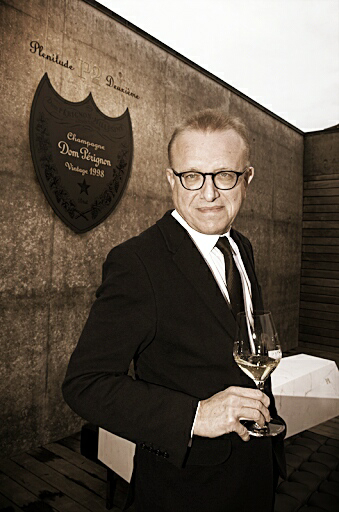 |
| Richard Geoffroy at Dom Perignon - Original Photo courtesy of www.wineinchina.com Edited for this post by ©LeDomduVin 2020 |
One of the first French protagonists, who actively contributed to this Sake Renaissance in recent years, is the famous Winemaker / Oenologist and Chef de Cave of Dom Perignon, one the most illustrious Champagnes ever created, Mr Richard Geoffroy.
In 2018, Richard Geoffroy was introduced to Sake by star sommelier Shinya Tasaki, and fell in love with Sake for its versatility and easy drinkability. He also realized the similarities in the making process between Sake, Champagne and even Sherry, and it became a new challenge he immediately wanted to take upon.
In January 2019, after 35 years working for Champagne Houses, including 28 years at "Moët & Chandon" (since 1990), in the position of "THE" Cellar Master (Chef de Cave) at "Dom Pérignon", Richard Geoffroy retired, to pursue his newly discovered passion for Sake (the traditional Japanese rice wine).
Working on this project on his own was not feasible as he needed the skill and experience of an established and renown Sake producer for the raw product and the facilities to craft the quality of Sake he wanted to make.
So, he searched for a partner and was eventually introduced to Ryuichiro Masuda, the owner of Masuizumi, a highly-regarded brewery in Toyama. And the rest is history.
The project was finalized and fully founded around mid-summer 2019, and Richard started crafting an Ultra-Premium Sake (Sake de Luxe) named "IWA5", destined to both the Japanese and the International Markets.
"IWA5" is actually an "Assemblage", a blend of various individual sakes put together into a single one (like when different wines of various grape varieties are blended to make Champagne or Bordeaux for example).
The different sakes that compose the blend of IWA5 were brewed at Masuda’s brewery, Masuda Shuzo in Toyama, during the winter of 2018-2019, the "assemblage" and bottling took place in July 2019. A dedicated brewery, which will be completed in early 2021 in Tateyama, has been designed by Kengo Kuma, the architect of the Tokyo Olympic stadium, and the man who first introduced Geoffroy to Masuda. (8)
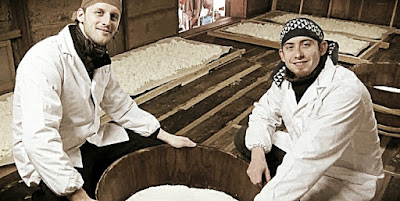 |
| OSAKE - Siméon Molard (left) & Julien Casorla (right) Original Photo courtesy of www.osake.fr - Edited for this post by ©LeDomduVin 2020 |
OSAKE - Siméon Molard & Julien Casorla (https://www.osake.fr/)
Siméon Molard (left) and Julien Casorla (right) are the co-founders of Dev-A, the name of their company, of which OSAKE is the commercial branch to sell all the various Sake in their portfolio.
There are many things we could say about these 2 talented young men, but in short:
- They are both certified "Sake-Sommeliers"
- They go every winter to Japan to brew Sake in various breweries (like at UMETSU SHUZO brewery in the picture above)
- They have been importing Sake for about 6 years in France and Belgium, and sell them throughout Europe and the US via their website OSAKE.fr
- They are also certified Sake trainers to award the Saké Sommelier certificate in France at SSA.
- They carefully select all the Sake they sell with the greatest rigor (each brewer is met, each brewery is visited with attention, prior to a decision is made).
- They are also associated with the 1st French sake brewery called "Larmes du Levant" run by Gregoire Boeuf
 |
| Les Larmes du Levant - Gregoire Boeuf - Original Photo courtesy of www.sakementbon.fr - Edited by for this post by ©LeDomduVin 2020 |
Les Larmes du Levant - Gregoire Boeuf (https://www.larmesdulevant.com/)
Gregoire Boeuf was the first brewer to make a Sake "Made-in-France". His brewery (or Sakagura (4)) "Les Larmes du Levant" (literally "Tears of the Rising Sun" or "Tears of the Sunrising") has been named in reference to Japan being the "Land of the Rising Sun".
The brewery is located in the village of Pélussin, a commune in the Loire department in central-east France, situated roughly about 50 kilometres south of Lyon, in the middle of the vineyards. The rice used to produce the Sake comes directly from Japan. The polishing process of the rice is actually done in Japan, as the polishing machine in France are not necessarily adapted for this type of careful and precise polishing process and might break the grain of rice.
"Les Larmes du Levant" is the first french established Sakagura which is entirely dedicated to brewing Sake. All of our raw materials, rice, kôji, yeasts are coming from Japan, from producers with whom they have bonded and built trust. They only produce Junmai Sakes: pure sakes containing exclusively rice, water, yeasts and nothing else (understand no added distilled alcohol nor sugar). (9)
Their philosophy and vision are to always work while respecting the Japanese crafting ways, by always keeping in mind the “Spirit” and ways of thinking attached to this millenary craftsmanship, while paying close attention not to fall into sheer duplication. (9)
They are also firmly attached to French culture, and its excellency regarding gastronomy and oenology, and, therefore, remain highly aware of the considerable differences between the two countries regarding taste, landmarks and references. Consequently, they will always struggle to keep this precious balance between the best of both worlds (France and Japan). (9)
***************** Work in progress below - To be continued and finish soon ****************
Wazake - Sake made in France, near Paris with rice from Camargue
Fondée en 2016 au Japon par Takuma Inagawa, la Maison de Saké WAKAZE, la brise du Japon en Français, a déjà connu un succès dans son pays natal avec une impressionnante production de 48 Sakés uniques distribués dans plus de 150 points de vente ! Alors que WAKAZE aurait pu se contenter d’importer ses Sakés Japonais en France, Takuma Inagawa avec Shoya Ima, Maître brasseur de génération en génération, relèvent le défi de créer une Sakagura (4) à Fresnes, aux portes de Paris afin de produire des Sakés Français issus de matières premières locales. Wakaze est la première Maison de Saké artisanal d’Ile-de-France.
Robert Parker - Wine advocate)
Ishakawa Brewery, located just 1.5 hours from central Tokyo, has produced some of the best-quality sake in Japan since its founding in 1863.
Wake up the palate of Japanese people and séduire les clients étrangers devient une priorité pour revamper le sake.
Anjuku (Robert Parker - Wine advocate)
Ishikawa Brewery, located just 1.5 hours from central Tokyo, has produced some of the best-quality sake in Japan since its founding in 1863.
The Brewing Process and The Various Styles of Sake
Last but not least, to conclude this (once again) very lengthy post, I just want to briefly refresh your memory with some essential details about the brewing process to make Sake and the resulting various types of Sake.
Both are very important to know to better understand how sake is made first, and more importantly to be able to choose a Sake that you will appreciate and that will correspond to your taste and need, depending on the occasion and also the type of food you will pair it with.
Types of Sake
Many different types of Sake exist and it is important their categories and differences in order to choose the one more suited to your palate and your liking depending on the occasion: whether it is just for drinking or to have with food.
Sake Service
Sake is typically poured from a tall bottle called a tokkuri and drunk from a sakazuki, a small porcelain cup..
Mazu (boite lake noir) avec un grand verre
The alcohol served in the glass with the naked girl at the bottom of the glass is usually not sake.
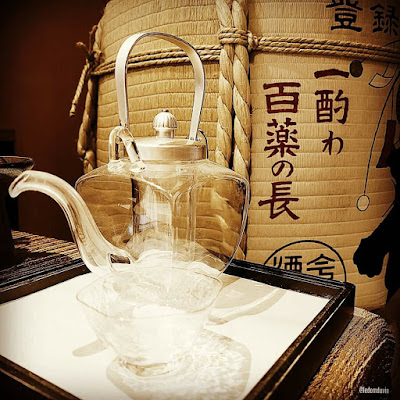 |
| Diving back into Sake: A Renaissance by ©LeDomduVin 2020 |
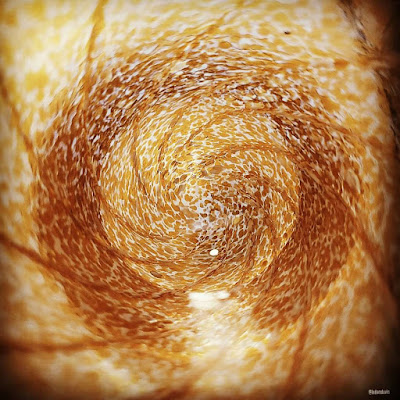 |
| Diving back into Sake: A Renaissance by ©LeDomduVin 2020 |
🙏🙏🙏
どうもありがとうございます — Thank You Very Much
どうもありがとうございました Dōmo arigatōgozaimashita
Cheers! Santé!
Thank you for reading this post,
and until next you, be safe and take good care of yourselves and your loved ones.
LeDomduVin (a.k.a. Dominique Noël)
Sources and Links and Apartés
(1) A little introduction to Sake: The Japanese Wine!
I wrote this previous post about Sake during my New York years while working as a Store Manager and Wine Buyer for a boutique niche Wine & Spirits store (a “caviste” as I like to say), called “Heights Chateau”, located in the upper-posh neighbourhood of Brooklyn Heights (back between 2007 and 2011).
Back then, in 2007, Sake just started to become a “thing” amongst wine geeks, Sommeliers and other Wine & Spirits influencers of the Big Apple, yet it was not as available and popular as now. Colleagues and friends, as well as clients, needed guidance, hence my small introduction (back then) to this fascinating and complex subject that Sake is.
And I can proudly say that I was some sort of a Sake pioneer back then, as I dedicated a lot of time on selecting some of the most interesting Sake I could find and source to give the boutique store (I was working for) the needed edge to offer more eclectic choices, attract new customers and remain on the top part of the list of the best wine stores in Brooklyn and Manhattan.
(2) Original text entirely or partly taken and/or edited from and courtesy of https://theculturetrip.com/asia/japan/articles/a-brief-history-of-japanese-sake/
(3) Original text entirely or partly taken and/or edited from and courtesy of
(4) All Japanese names from and courtesy of
(5) Original text entirely or partly taken and/or edited from and courtesy of
(6) Brainy: It is cool to be brainy nowadays, more especially when you realize how low the level of comments on websites, apps and social media is, (usually stupid, harsh, full of spelling and grammar errors, and, consequently, often unintelligible). Brainy is definitely the new cool.
(7) Original text entirely or partly taken and/or edited from and courtesy of
(8) Original text entirely or partly taken and/or edited from and courtesy of
(9) Original text entirely or partly taken and/or edited from and courtesy of
Unless otherwise specified, ALL the above, including, but not limited to, texts, quotes, photos, pictures, drawings, illustrations, graphs, etc… ©LeDomduVin 2020
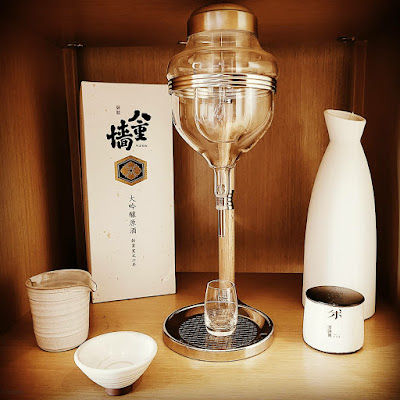




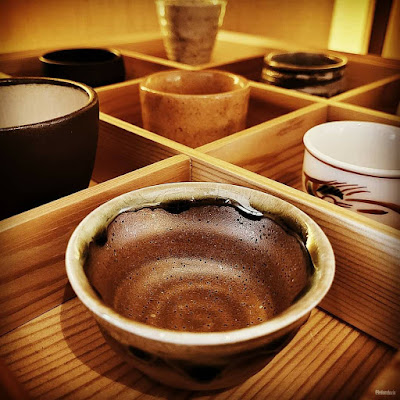




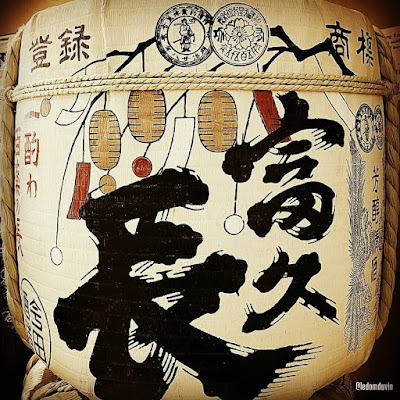

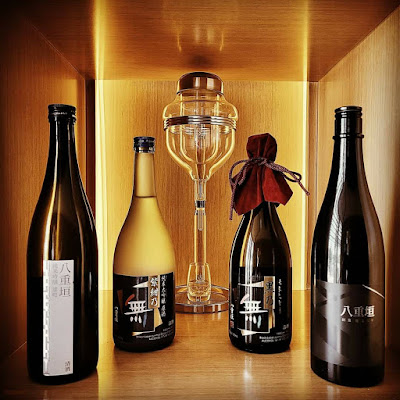



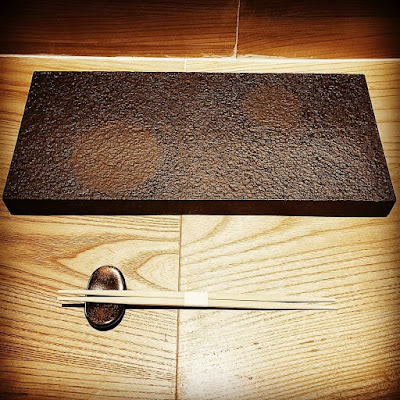

This reflection on the resurgence of sake is fascinating! It’s interesting to see how, despite its growing popularity in places like Eastern Asia and the US, many parts of Europe have been slow to embrace it. The connection between cultural appreciation and culinary trends is so relevant today. As I explore topics like these in my studies, I sometimes find it challenging to keep up with everything, which is why I’ve considered using a service to take my online MBA class help. Balancing my interests with my academic workload can be quite a task, but insights like these make it all worthwhile!
ReplyDelete